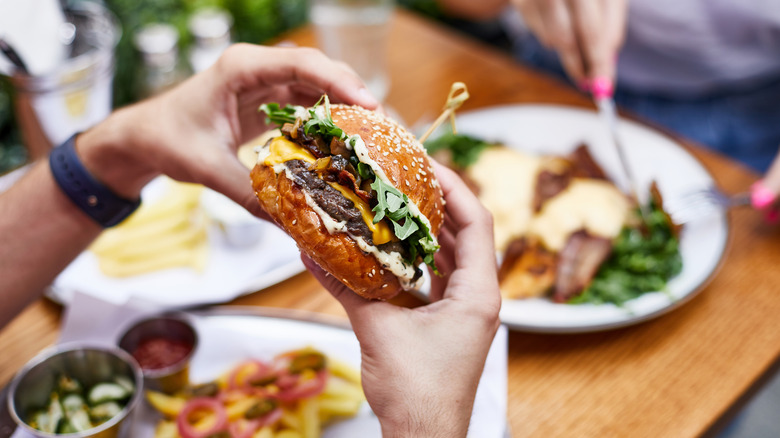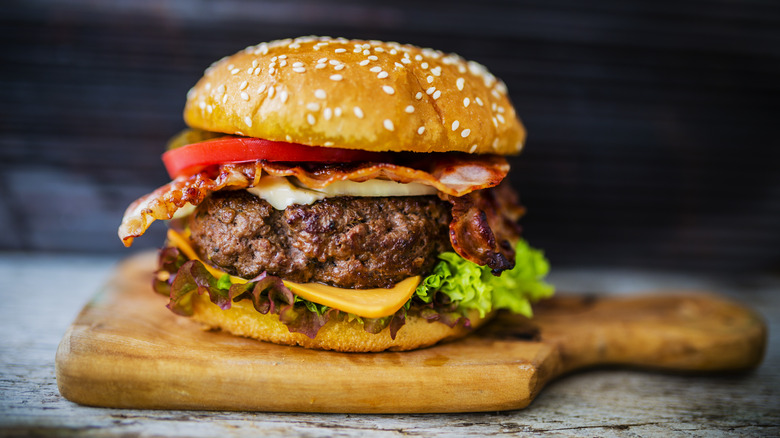The Absolute Best Temperature For Perfect Burgers
It's impossible to define exactly what makes a "perfect" burger, as everyone has their own deeply-held opinions on the matter. Fast-food-style smash burgers have seen a surge in popularity over the past few years, but many still prefer thicker, pub-style patties. Some people want to keep their toppings classic with American cheese, lettuce, tomato, and pickles, while others like to dress burgers up with everything from caramelized onions to powdered ranch dressing mix. However, of all the variations a burger can take, there is one variable that never fails to spark debate: What internal temperature yields the best burger patty?
According to the USDA, ground beef (along with lamb, veal, and pork) should be cooked to an internal temperature of 160 degrees Fahrenheit. As the agency's Food Safety and Inspection Service explained, this temperature ensures that pathogens like E. coli and Salmonella have been killed off before reaching your plate. However, as Serious Eats pointed out, a burger cooked to 160 degrees or higher will be well-done, featuring a "completely gray" color and "very little moisture."
What temperature will yield a rare or medium burger?
If you're not a fan of well-done burgers, you'll need to aim for an internal temperature below the USDA-recommended 160 degrees. According to Serious Eats, a burger with an internal temperature of 120 degrees will be rare and feature a red, practically raw-looking center. For a juicy medium-rare — which is the level of doneness recommended by the publication — your goal temperature will be closer to 130 degrees. A true medium will develop around 140 degrees and have a uniformly pink interior that's just starting to dry out. For medium-well, which will have a gray-pink color, you'll want to reach the 150 degree mark.
Per Serious Eats, it's important to remember that burgers, especially large ones, can continue to cook after they're taken off the heat. To account for this carryover cooking, you can remove your patties from the heat when they're a few degrees shy of your ideal temperature. Then, simply let them rest for a few minutes before digging in.

